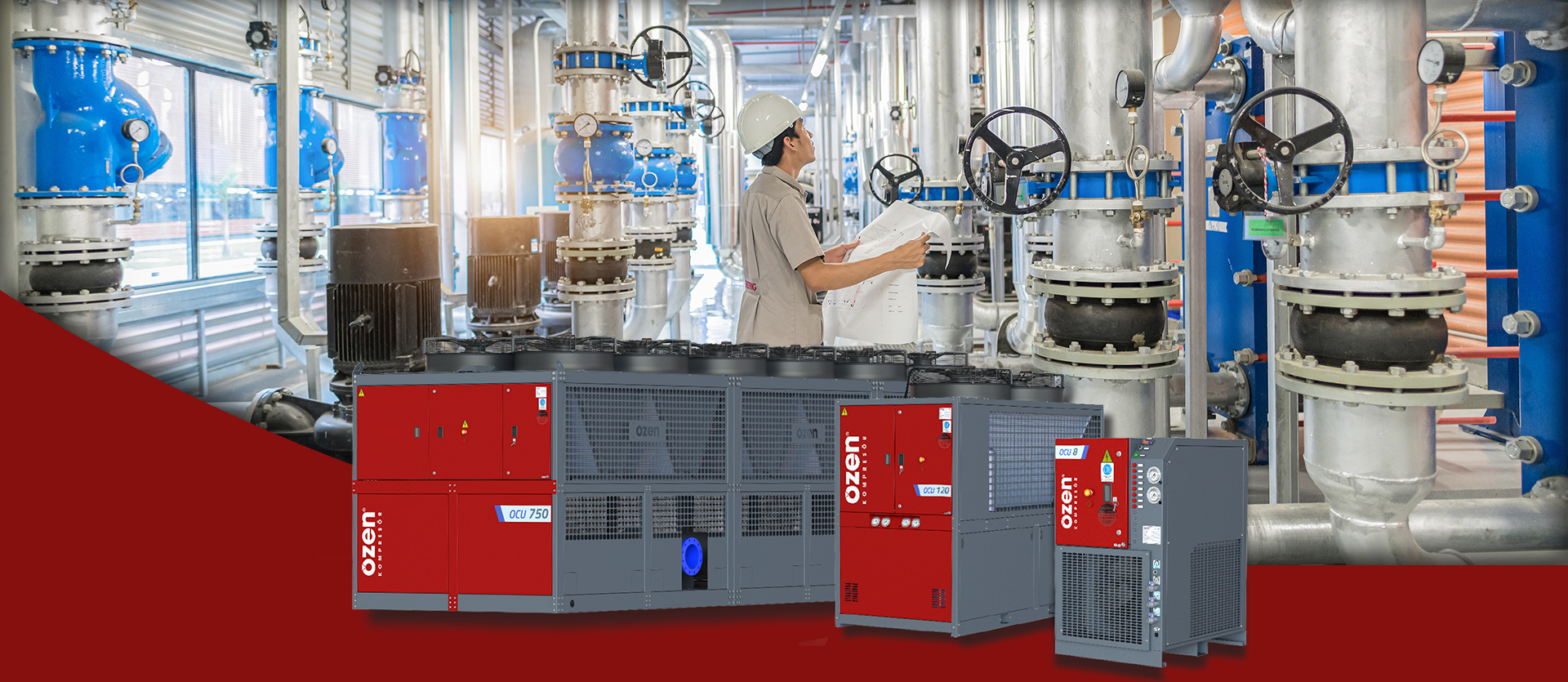Industrial Cooling Systems
29 January 2024, Monday

Many plants and production facilities in the industrial field need cooling systems to store and process their products. These are important systems that cool and humidify the air in the plants.
Those systems operate with the principle of vapour compression or absorption. Vapour compression systems compress the coolant via a vapour compressor, maintaining high pressure and temperature levels. On the other hand, absorption systems generally handle the cooling process via an absorbent and coolant. Industrial cooling systems are used in many sectors, from food industry to pharmaceutical industry. These systems are of utmost importance for storing the products efficiently without spoilage, and for the required processes.
Chiller System
A chiller system, also called an injection cooling system, is a system that receives heat from a source and transfers it to another source. The system is used in industrial plants, hotels and other big buildings. It consists of condenser, expansion valve and evaporators. The condenser condenses the hot gas from the evaporator and converts it into a high-pressure liquid. The expansion valve is used to convert the high-pressure liquid into low-pressure liquid. The evaporators pump the liquid to the cooling systems to decrease the temperature of the environment to be cooled. These systems are used to eliminate the excess heat generated in the industrial activities, and to provide a comfortable working environment. Chiller system is a complex and sensitive system, and therefore requires periodic maintenance and inspection.
Natural-Draught Cooling System
This is a natural cooling system that ensures direct contact with fresh air for cooling the hot water within the system. This system has been designed to cool the water using the density of the hot air on top. Large systems allow cooling of very high amounts of water. These systems are widely used in cooling of hot water in industrial plants, power plants and big buildings. Such systems have longer service life, and require less maintenance compared to other cooling systems. On the other hand, installation and maintenance works on these systems should be performed by professional teams to ensure optimum performance and efficiency.
Such cooling systems are used in industrial plants such as power plants or natural gas plants. To describe the system in the simplest way, it can be considered as a huge and complex chimney. The system has been designed to naturally direct the air flow to the tower, and can operate without a mechanical fan system. This feature also provides an iconic appearance for power plants.
Mechanical-Draught Cooling System
Mechanical-Draught Cooling System is among the industrial coolant systems, and operates as an electromechanical core cooling system. The system uses the evaporation process for cooling, and operates via spraying hot water. Water droplets are then mixed with the ambient air, which ensures heat transfer via this dry air thanks to the temperature difference between the hot water and cold ambient air. Cooling systems operate using the hot water from the condenser and other equipment, and are supported by the mechanically-classified motorized fans. These are one of the important cooling systems among those used in the industrial fields, and are considered as suitable options in efficient cooling of hot water.
In large-scale industrial complexes, mechanical air cooling systems of different forms and dimensions are used. Certain smaller variants are available as roof units. When it comes to industrial mechanical cooling system alternatives, it is important to note the construction materials used, as well as the durability and ease-of-maintenance of the system. It is critical to ensure that these industrial cooling systems continuously operate, without causing any downtime in the production line within the plant.
Water Cooling and Dry Cooling Methods
Industrial cooling systems are divided into two main groups: water cooling and dry cooling systems. Water cooling systems provide advantages such as delivering a much colder coolant to the process, and cost efficiency. These systems are used to rapidly and reliably decrease the temperature level in the industrial plants. On the other hand, the dry cooling systems minimize the use of water, increasing the energy efficiency. These systems are preferred in the industrial plants where the water is limited, or the use of water is strictly regulated. It is also possible to classify the cooling systems based on the heat transfer techniques used. These techniques are crucial for proper production processes and for maintaining the product quality in the industrial plants.
On the other hand, drying is slightly different from cooling, because mechanical means are used to cool the liquids with air. Heat is transferred via air-cooled heat exchangers. This method ensures that the operating liquid is separated, and prevents water loss in the system. However, these dry cooling systems lead to cold water with higher temperature, that’s why they are not as efficient as mechanical open industrial cooling systems. Liquid coil cooling systems are smaller, but can be tailored to serve as industrial cooling systems. These systems can be used in many industrial applications, as well as the cooling systems that can be seen on top of supermarkets. Such systems can be good options if efficient cooling is not crucial, and water saving is necessary.
